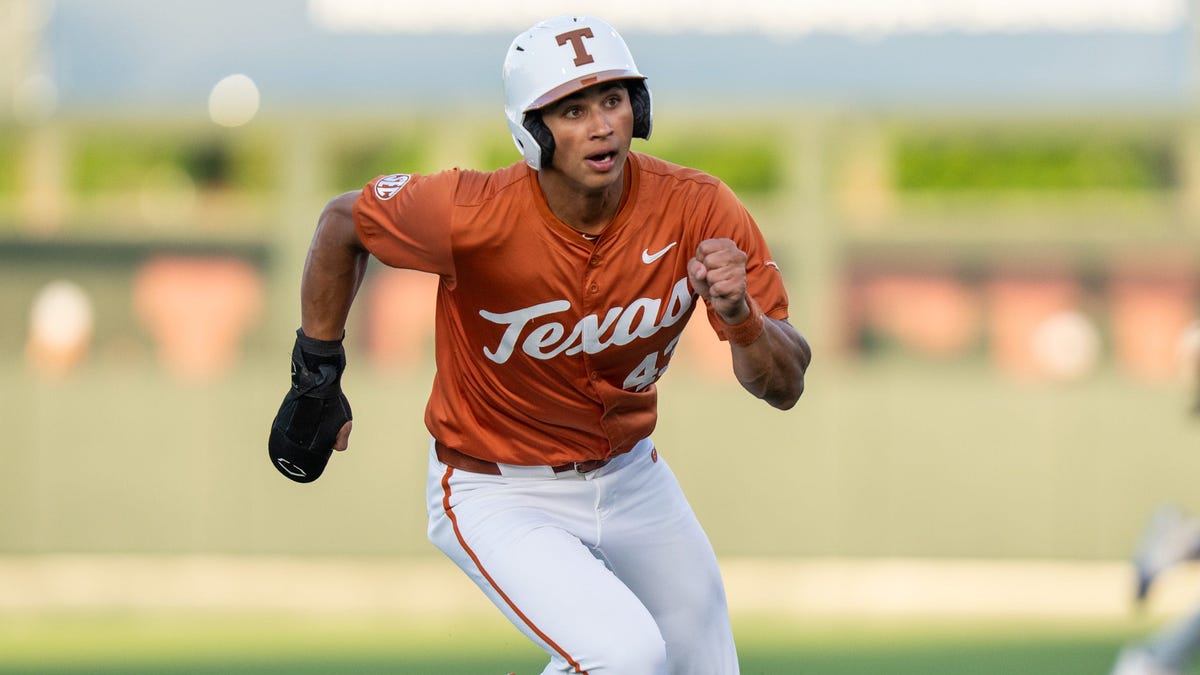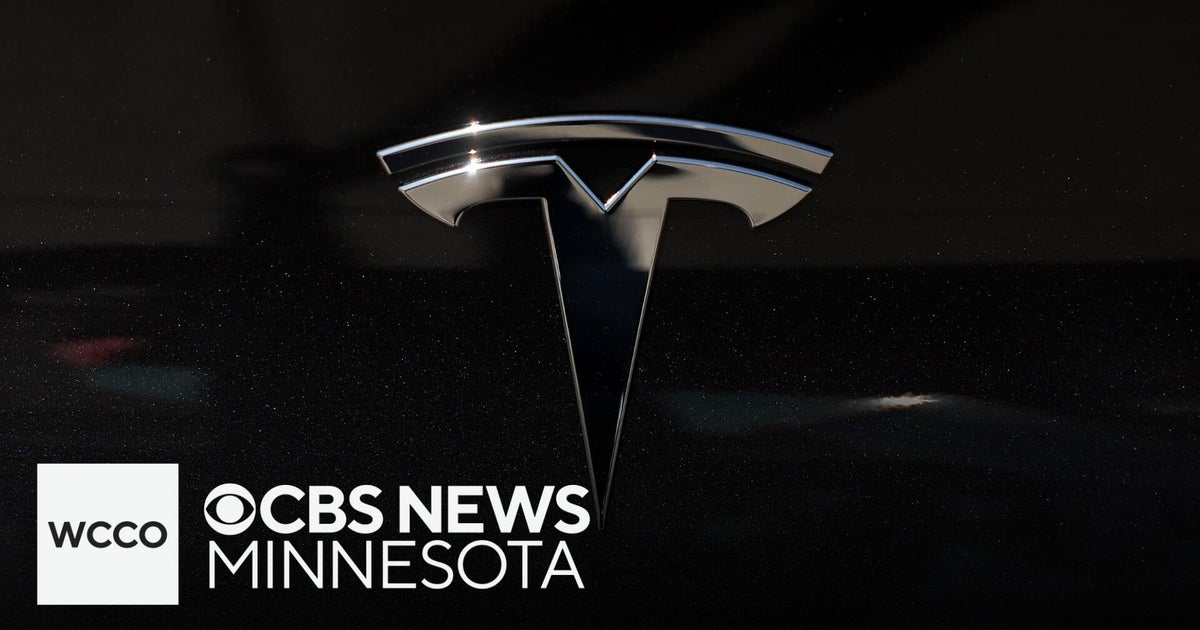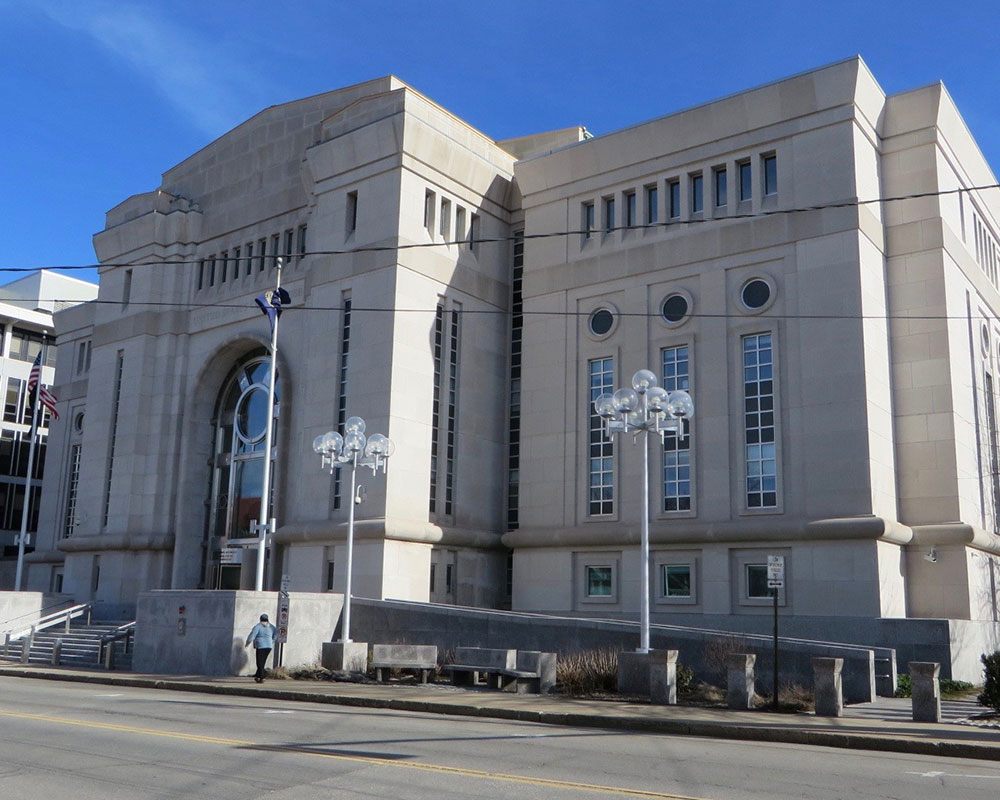Austin, TX
How the San Antonio-Austin area economy builds a mega-metro

Fireworks display reflecting on the facility during the Tesla Giga Texas manufacturing “Cyber Rodeo” grand opening party on April 7, 2022 in Austin, Texas. – Tesla welcomed throngs of electric car lovers to Texas on April 7 for a huge party inaugurating a “gigafactory” the size of 100 professional soccer fields.
SUZANNE CORDEIRO/AFP via Getty Images
But for economic development leaders, the only thing new about the San Antonio-Austin mega-metro is the name. For those working to attract high-dollar business deals in the corridor between the two cities, the allure of the proximity to two major talent centers has been a selling point for at least a decade.
In this installment, which will focus on business, we spoke with economic development directors in the smaller mega-metro cities to understand when everything changed, how the influx of technology has transformed their towns, and what the future might look like as the region grows.
Advertisement
Article continues below this ad
Tesla leads billion dollar business boom in mega-metro
“I think in reality, we’ve been a mega region and operating as a mega region for a period of time now for at least a decade,” says Will Conley, former CEO of the Greater San Marcos Partnership.
Conley serves in an interim capacity as the non-profit economic development company serving the city and Hays and Caldwell Counties searches for its next top executive.
San Marcos and the surrounding area has been able to recruit high-dollar business to the region since Conley has been involved. The city is attractive to businesses because of some combination of population explosion — San Marcos grew more than 50% between 2010 and 2020 — and its proximity to talent centers in San Antonio and Austin.
Advertisement
Article continues below this ad
Whereas 20 years ago, a prospective business might need an explanation on the city and the region, Conley says that the job of economic development professionals has gotten much easier. Thanks to companies like Samsung, Apple, Toyota, and Tesla, all of whom have invested hundreds of millions or billions of dollars into the mega-region, former outliers like San Marcos have become hotspots.
Conley says he recently sat in on an economic development conference in Williamson County, at which the principals involved discussed billion dollar deals for three hours.
“If you were in the $500 million range,” he says, “you were no longer part of the three hours.”
Advertisement
Article continues below this ad
Even though San Marcos sits almost dead center in the middle of the mega-region, New Braunfels, considered a suburb of San Antonio, has also approached economic development on a regional basis for years.
Jeff Jewell, director of economic development for New Braunfels, says that from a governance perspective (spoiler alert, more on that in a future story), the mega-region lags behind the economics.
“The developers, definitely, I think, do look at it as one market,” he says. “I think everybody’s pretty bullish on the region generally.”
Advertisement
Article continues below this ad
Similarly to San Marcos, Jewell points to Giga Texas, Tesla’s flagship manufacturing factory in Austin and Samsung’s $17 billion chip plant in Taylor as bellwethers for massive expansion in New Braunfels. The money, it appears, has trickled south down I-35.
In Kyle, Tesla recently signed a lease for one million square feet at the Kyle 35 Logistics Park. At an event announcing the deal, Mayor Travis Mitchell slyly mentioned that they were confident that at least some of the 1.4 million square feet of warehouse space meant to attract big business would net at least a supplier to Tesla.
Advertisement
Article continues below this ad
“What we got instead was Tesla,” Mitchell said.
Though all cities along the corridor looking to be major players offer incentives to developers and businesses looking to invest in the region, with the influx of companies like Tesla, many are now able to be much more selective. The relationship, once one-sided, has shifted some of the leverage toward smaller cities in the mega-metro. They no longer have to bat their eyes and wait in the corner of the dancehall, hoping for big tech to ask for a dance.
“[The Tesla deal] gives Kyle credibility,” said Victoria Vargas, director of economic development for the City of Kyle. “Other companies can see that if there’s a large investment by Tesla here, then we’ve got to be doing something right.”
A freight train over the Guadalupe River at sunset in New Braunfels.
Sinisa Kukic/Getty Images
Advertisement
Article continues below this ad
How can the small town Texas vibe survive in a mega-metro?
As these communities grow, they face major concern from residents about what will happen to both the physical architecture of the cities and how they will feel. There’s a line between the past and the future, and many of these cities are standing with one foot on either side.
“I don’t think it’s healthy for the city to just never change and evolve over time,” Jewell says.
But there’s a balance that each of these communities has to strike. After all, though developers view the region as a monolith, the people within those communities find personal identities in their cities and towns. After all, New Braunfels is different than Seguin and Lockhart is different from Kyle in the same way that Dallas and Fort Worth are joined, and yet not so inextricably linked.
Advertisement
Article continues below this ad
Because of its history as a tourist town, “New Braunfels has kind of its own thing going on along the corridor, and its own identity,” Jewell says. It can’t — and won’t — change in the same way that a place like Buda might.
In that way, it won’t look like one big urban zone through the mega-metro, each city and town erecting downtowns and smashing them together.
“You’re never going to see high rises in Wimberley,” Conley says. “I don’t care what year it is.”
The Hays County Courthouse in San Marcos.
DenisTangneyJr/Getty Images/iStockphoto
Advertisement
Article continues below this ad
But you might see them just 25 miles east on FM 150.
Vargas hears every day from residents concerned about Kyle’s future. To balance the immense growth, the city has invested millions in new parks and sought out retail opportunities to provide residents with a sense of pride in the city.
But she admits that being one of the fastest-growing cities in America makes retaining small-town charm a difficult task. Instead, Kyle is using this time to plow ahead into the future, using the formal formation of the mega-metro as a way to shed its former identity as purely an Austin suburb.
Vargas says that Kyle’s proximity to Austin has been a huge benefit, but since about 2016, when the city adopted a new economic development strategic plan, it realized that it wanted its own identity. They found, through research, that 80% of the city’s population left every weekday, primarily to work in Austin. Additionally, they found that shoppers regularly bounced to nearby cities like New Braunfels to get their fix. That’s leaving money on the table.
Advertisement
Article continues below this ad
“We’re trying to shed the image of the bedroom community,” Vargas says. “We no longer have to say, ‘Oh, we’re just south of Austin.’ I don’t remember the last time I said that to anyone.”

Austin, TX
Texas’ mortality crisis isn’t random. These deaths reflect policy failures | Letters

Re: April 21 article, “People aren’t living as long as they did 4 years ago, data shows”
Your recent article on declining life expectancy in Texas points to a deeper crisis. As a public health researcher studying “deaths of despair” — from suicide, alcohol and drug overdoses — I’ve found these deaths have increased by 153% in Texas since 2000, especially among those of working-age in economically distressed counties.
In 2020 alone, the state lost nearly 372,000 years of potential life to preventable causes. These outcomes aren’t random. They reflect policy choices. Texas still refuses to expand Medicaid, ranks near the bottom in mental health funding, and has passed abortion bans contributing to a 56% rise in maternal mortality from 2019 to 2022.
We know what works: Access to care, housing and economic opportunity saves lives. What’s missing is the political will to act.
Camerino I. Salazar, doctoral candidate, University of Texas at San Antonio
When will we heed the urgent warnings on climate change?
Re: April 24 article, “Climate ‘tipping points’ are near”
When there is virtually unanimous consensus among the people who devote their entire careers to studying a given topic, who are the world’s foremost experts, we had best pay attention to what they say — especially when what they say is irrefutably backed up by evidence every one of us can see in our daily lives.
To date, we have not paid much attention to what the experts are saying about how we are disrupting, even destroying, Mother Nature’s harmony. American Indians and many other indigenous groups around the world lived without pillaging and destroying the environment that sustains us, but our society has not found a way to do so. We continue to ignore the warning signs screaming all around us — at our own peril.
Technological advances are not going to get us out of this mess. We must make social, political, economic, behavioral and attitudinal changes.
Mark Warren, Austin
State duplicates the agency focused on efficiency
Re: April 24 article, “Abbott signs DOGE bill, targets state bureaucracy”
So, by a fell swoop of pen and cooperation of the highly efficient Legislature, Gov. Greg Abbott has created the Texas Department of Government Efficiency (DOGE). Interesting, because I always thought that was the function of the Texas Sunset Commission. For some reason, it does not seem efficient to have two agencies performing the same task.
But what do I know. I’m just a tax-paying citizen.
John Williams, Austin
Texas DOGE can start by killing anti-renewables bill
Gov. Greg Abbott has signed a bill to establish a state agency to find and remove regulations that hamper Texas’ growth. Let’s start by killing the bill designed to hinder growth of renewable energy. About 30% of energy generated in Texas is from solar and wind — and it is cheaper than electricity from coal or natural gas.
Wealthy Republican donors are sitting on a reservoir of natural gas in west Texas that is threatened by the renewable sector, which is really what Senate Bill 819 is about. Kill it now.
Lawrence Ragan, Austin
Great. The bathroom police are back.
Re: April 22 article, “Texas Senate to hear bathroom bill”
So, will the state hire cops to check peoples’ privates before they enter a public restroom? I’m a 78-year-old woman who enters a restroom, hoping there is toilet paper in the stall before I lock the door. Who cares if the person in the next stall is gay, straight or trans? Do your business and wash your hands. Hopefully there are towels or a hand blower!
Aren’t there more important things to worry about?
Haven’t we moved on from the “whites only” days of discrimination? Things aren’t looking “great” if we continue down this path. Perhaps tattoos will be next, so we can quickly identify and judge one another.
Sue Kemp, Austin
Bills give Pornhub a pass without solving the problem
Texas legislators are considering Senate Bill 2420 and HB 4901. Both would implement app store verification mandates. While intended as an alternative to requiring age verification at the site level, this serves to help app developers dodge accountability for keeping children safe without solving the problem.
Worse, the bills mandate that app stores share user age information with every app developer regardless of the app’s nature or user consent, which creates severe privacy hazards for all users of the platform, regardless of whether they are trying to access apps with adult content.
The bills do nothing to address the many other ways children can access online platforms and sites with adult content. They only serve to exempt sites like Pornhub — which is supporting SB 2420 — from the responsibility of protecting children from the online harms on its platform.
Our legislators in Austin should scrap both bills.
Bill Peacock, Dripping Springs
An apt reminder of Austin Animal Center’s no-kill ethos
Re: April 20 commentary, “Austin can again become leader in animal services,” by Tawny Hammond
Thank you, Tawny Hammond, for reminding us of how Austin was once a no-kill leader. Our city animal shelter has recently failed to serve our community by refusing to even take in found animals. Now we have a chance to help people keep their pets through supportive programs and improve shelter life for the animals by making it easier to volunteer, foster and adopt.
I hope that City Manager T.C. Broadnax will show us that he wants to embrace what Austin is all about and find a new shelter director with the vision that Tawny Hammond brought during her too-short tenure.
Rona Distenfeld, Austin
Waiting for that voters’ remorse to kick in
Re: April 23 article, “Poll shows further dip in Trump’s approval rating”
How many more things need to go sideways before the folks who voted for President Trump finally admit they made a grievous error in judgment? I thought things were supposed to get better? He never said there would be a “period of adjustment.” He said it would be “immediate!”
Wake up and smell the coffee before that tariff hits the smell.
Tip Giles, Austin
Look at the damage done in just in a few months
I want to thank you all who voted for President Trump for all that is happening in this country.
I once was a Republican and believed that this was a country that always did the right thing. Now elected officials are working steadfastly to whitewash American history. DEI is a dirty word.
The Trump administration is attacking the freedom of speech and discussion in our universities. They are silencing scientific research in our health care system. They are invading our private lives and destroying our right to privacy. They are arresting people who have broken no laws. They have gotten rid of due process. They have destroyed America’s reputation so that no country will ever trust us to do what we promised to do.
Wealth has power. If only it was used for good.
Richard Chiarello, Austin
How to submit a letter to the editor
Send letters of no more than 150 words by using our online form at https://bit.ly/3Crmkcf or send an email to letters@statesman.com.
We welcome your letters on all topics. Include your name and city of residence; we do not publish anonymous letters.
Austin, TX
Texas vs Texas A&M score: Live updates, highlights from SEC college baseball game

Hunter Elliott, Mike Bianco talk Ole Miss baseball win vs Vanderbilt
Ole Miss baseball pitcher Hunter Elliott and coach Mike Bianco discuss the Rebels’ 8-3 win over Vanderbilt on April 25
Texas baseball coach Jim Schlossnagle earned his first win over his former team on Friday night, as the No. 1 Longhorns (35-5, 17-2 SEC) defeated Texas A&M 2-1 in Game 1 of their three-game series.
Schlossnagle, who took the Texas job just a day after leading Texas A&M (24-17, 8-11) to the national championship last season, has been the center of attention this week in the college baseball world. That’ll happen after leaving for another school’s archrival.
The Longhorns will trot out left-handed pitcher Luke Harrison for the start, which won’t be an easy task for the Aggies. Harrison has a perfect 3-0 record with a 2.98 ERA this season. Texas A&M, meanwhile, is starting right-hander Justin Lamkin, who’s 3-4 this season with a 4.13 ERA.
Both teams will be looking for more offense on Saturday, with the Aggies needing a win to avoid dropping the three-game series.
Follow along here for live updates and highlights from Texas-Texas A&M baseball on Saturday:
Watch game two of Texas vs. Texas A&M baseball live with Fubo (free trial)
This section will be updated live.
| Team | 1 | 2 | 3 | 4 | 5 | 6 | 7 | 8 | 9 | F |
| Texas A&M | 1 | 0 | — | — | — | — | — | — | — | — |
| Texas | 0 | 0 | — | — | — | — | — | — | — | — |
Lamkin continues his nice start to the game, as he picks up his third strikeout of the game to strand a Texas baserunner in the second inning. Aggies looking to add to their lead in the top of the third here.
The Aggies take an early 1-0 lead after Wyatt Henseler’s sacrifice fly scores leadoff man Terrence Kiel II. Texas A&M heads into the next frame with a lead.
- DH Ethan Mendoza
- C Rylan Galvan
- SS Jalin Flores
- CF Will Gasparino
- 1B Kimble Schuessler
- 3B Casey Borba
- RF Tommy Farmer IV
- LF Adrian Rodriguez
- 2B Jayden Duplantier
Luke Harrison pitching.
- RF Terrence Kiel II
- CF Jace LaViolette
- 3B Wyatt Henseler
- DH Caden Sorrell
- C Bear Harrison
- SS Kaeden Kent
- 1B Blake Binderup
- 2B Ben Royo
- LF Jamal George
Justin Lamkin pitching.
Texas vs Texas A&M time today
- Time: 4 p.m. ET
- Date: Saturday, April 26
- Location: UFCU Disch-Falk Field (Austin, Texas)
Texas-Texas A&M baseball is set for a 4 p.m. ET first pitch in Austin, Texas.
Where to watch Texas vs Texas A&M baseball
Longhorns-Aggies baseball will air live on ESPN2, with streaming options available on the ESPN app (with a TV provider login), or Fubo, the latter of which offers a free trial to potential subscribers.
Austin, TX
Weather updates: Latest on Texas vs Texas A&M baseball matchup after delay for rain, lightning

Cade Belyeu hits emotional home run for Auburn hours after mom’s death
Auburn baseball’s Cade Belyeu hits a home run in Auburn, Alabama, just hours after mom’s death from cancer, honoring her memory in an emotional game.
USA Today
The first pitch for the highly anticipated Game 1 of the Lone Star Showdown between Texas and Texas A&M baseball has been interrupted by Mother Nature.
Due to inclement weather in the area, Texas announced on social media that the start of the three-game college baseball weekend series at UFCU Disch-Falk Field in Austin, Texas is in a delay.
Friday’s game is the first meeting between the Longhorns and Aggies since Jim Schlossnagle left Texas A&M for Texas after leading the Aggies to Game 3 of the College World Series against Tennessee last June.
USA TODAY Sports Network will provide updates on the weather delay Follow below:
This section will be updated. All times Eastern
8:30 p.m.: Texas A&M has taken the field at UFCU Disch-Falk Field for pregame warmups. First pitch between the Aggies and the Longhorns is set for 8:05 p.m. CT.
8:21 p.m.: First pitch has been set for 8:05 p.m. local time in Austin, Texas. Gates are also now open for fans.
7:50 p.m.: As noted by KBTX Sports’ Travis L. Brown on X (formerly Twitter), the scoreboard at UFCU Disch-Falk Field announced that another lightning strike has been detected in the area. Due to that, the first pitch will not now take place before 7:45 p.m. local time on Friday, as the 30-minute clock for game resumption was restarted.
7:40 p.m.: With rain coming down and lightning detected in the area, fans have taken shelter inside a nearby parking lot at the stadium.
7:20 p.m.: Texas baseball’s official X (formerly Twitter) account announced that Friday’s game will start in a weather delay and advised fans to stay in shelter.
7:20 p.m.: As noted by KBTX News’ Chief Meteorologist Max Crawford, lightning is currently still in the Austin area. Reminder: The NCAA Weather Protocol states that for every lightning strike detected within a six-mile radius of the stadium the clock resets with a new 30-minute clock for game resumption.
The USA TODAY app gets you to the heart of the news — fast. Download for award-winning coverage, crosswords, audio storytelling, the eNewspaper and more.
-

 Education1 week ago
Education1 week agoVideo: Shooting at Florida State University Leaves 2 Dead and 6 Injured
-
News1 week ago
Harvard would be smart to follow Hillsdale’s playbook. Trump should avoid Biden’s. | Opinion
-
Business1 week ago
Porto's Bakery moving forward in Downtown Disney, replacing Earl of Sandwich
-

 Politics1 week ago
Politics1 week agoSupreme Court blocks new deportations of Venezuelans in Texas under 18th century Alien Enemies Act
-

 Politics6 days ago
Politics6 days agoVideo: Hegseth Attacks the Media Amid New Signal Controversy
-

 Culture4 days ago
Culture4 days agoNew Poetry Books That Lean Into Calm and Joy Amid Life’s Chaos
-

 News1 week ago
News1 week agoThe NHL Stanley Cup Playoffs begin Saturday. Here's what to watch for
-

 Politics6 days ago
Politics6 days agoPope Francis and US presidents: A look back at his legacy with the nation's leaders




















